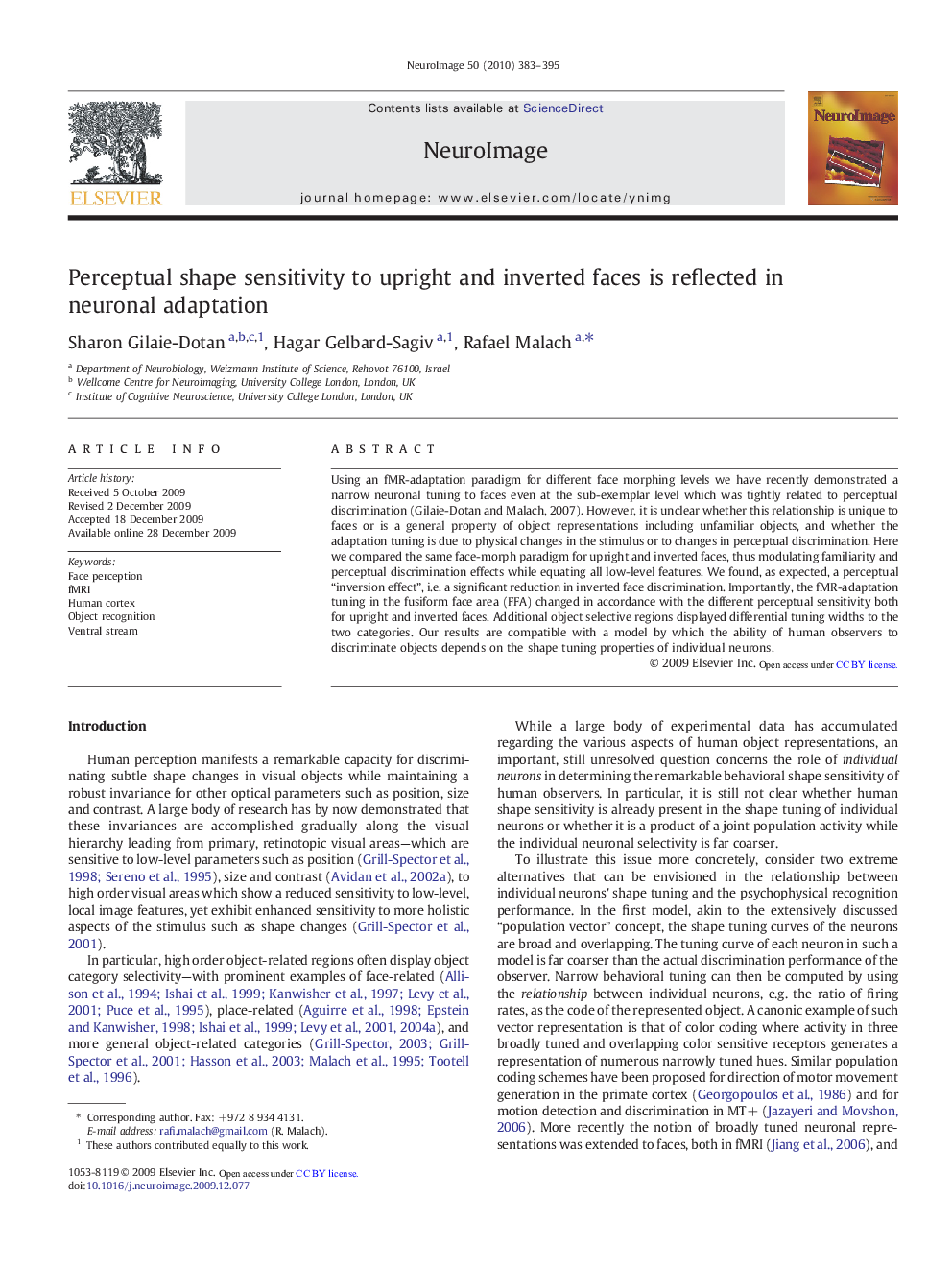| Article ID | Journal | Published Year | Pages | File Type |
|---|---|---|---|---|
| 6036541 | NeuroImage | 2010 | 13 Pages |
Using an fMR-adaptation paradigm for different face morphing levels we have recently demonstrated a narrow neuronal tuning to faces even at the sub-exemplar level which was tightly related to perceptual discrimination (Gilaie-Dotan and Malach, 2007). However, it is unclear whether this relationship is unique to faces or is a general property of object representations including unfamiliar objects, and whether the adaptation tuning is due to physical changes in the stimulus or to changes in perceptual discrimination. Here we compared the same face-morph paradigm for upright and inverted faces, thus modulating familiarity and perceptual discrimination effects while equating all low-level features. We found, as expected, a perceptual “inversion effect”, i.e. a significant reduction in inverted face discrimination. Importantly, the fMR-adaptation tuning in the fusiform face area (FFA) changed in accordance with the different perceptual sensitivity both for upright and inverted faces. Additional object selective regions displayed differential tuning widths to the two categories. Our results are compatible with a model by which the ability of human observers to discriminate objects depends on the shape tuning properties of individual neurons.
